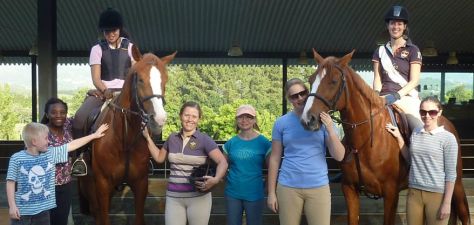“I almost faint at the sight of my calf. The flesh is a brilliant red covered with blisters. I force myself to take deep, slow breaths, feeling quite certain the cameras are on my face. I can’t show weakness at this injury. Not if I want help. Pity does not get you aid. Admiration at your refusal to give in does.”
If you’ve read “The Hunger Games”, you might – as I do – consider this scene as one of the most pivotal ones in the “arena”. If you haven’t, allow me to summarise: Katniss Everdeen, the main protagonist in Suzanne Collins’ dystopian world, is one of 24 “tributes” – teenagers sent into an artificial habitat with the sole aim of killing one another until only one is left standing. However, once in a while the brains behind this most cruel version of reality TV lend a helping hand and come up with additional “challenges” for the contestants. In this particular scene, Katniss has just been caught by a fireball the size of a hand grenade.
The scene is gripping on so many different levels, but it’s Katniss’ reaction to her harrowing injury that struck a chord with the sport psychologist in me.
 Okay, I grant you, it is unlikely that, as a rider, you’ll have fireballs thrown at you. Still, there’ll be many instances where your equestrian career will feel as cruel, forbidding and dangerous as the Hunger Games (we even have arenas too!). At a show, you’ll be fighting to come out on top (at times you might even feel like murdering the competition or shoot an arrow at the judges), you’ll have to manage injuries – your own or that of your horse – and, unless you’re exceedingly lucky, you’ll continuously struggle to make ends meet.
Okay, I grant you, it is unlikely that, as a rider, you’ll have fireballs thrown at you. Still, there’ll be many instances where your equestrian career will feel as cruel, forbidding and dangerous as the Hunger Games (we even have arenas too!). At a show, you’ll be fighting to come out on top (at times you might even feel like murdering the competition or shoot an arrow at the judges), you’ll have to manage injuries – your own or that of your horse – and, unless you’re exceedingly lucky, you’ll continuously struggle to make ends meet.
It’s a lot to deal with by anyone’s standard. And the question is, how do you cope?
Researchers in (sport) psychology agree that there are various ways of dealing with problems, but which particular manner we choose really depends on the situation we find ourselves in and how we’ve dealt with things in the past. Generally speaking, coping can be divided, on the one hand, into two styles, i.e. approach- or avoidance-styles, and, on the other two, into two coping strategies, i.e. emotion- or problem-focused coping.
As the names suggest, an individual choosing approach coping aims to face the problem head on, while avoidance coping means temporarily sticking one’s head in the proverbial sand. Problem-focused strategies are action orientated, that usually involve some kind of cognitive element too. Emotion-focused strategies focus on dealing with the feelings a problem has evoked.
By the way, whether you should use problem or emotion-focused strategies depends quite a bit on the situation itself. If you’re facing an issue that requires thinking your way through, you should employ the more analytical problem-focused strategy. If, however, your emotions get in the way, you might be better off using an emotion-focused strategy.
As Professor Mark Anshel from Middle Tennessee State University demonstrates in his two-dimensional framework this leaves us with four coping measures to choose from:
However, as interesting as such a framework is, you’ll presumably know from experience that there are ways of dealing with your problems that are more effective than others. Evidence suggests that, in the short term, both approach and avoidance styles have merit, but – and you’ve probably already guessed it – in the long term, the approach style wins hands down. The reason? If you keep running away from a particular problem, chances are, it’ll keep coming after you. If, however, you decide to come to grips with it, you’re much more likely to solve it once and for all.
I’m a firm believer in approach coping.
In equestrian sports, we continually deal with an animal approximately ten times as heavy as we are, with a will of its own. Sticking your head in the sand is likely to make things much, much worse. Much better to figure out a strategy of how to overcome a particular problem. This could be anything from letting your horse get checked out physically, taking lessons from a good coach, getting good, safe kit for yourself, or learning new skills, such as relaxation techniques (always a good one to improve fine motor skills.)
It’s what Katniss Everdeen did and it really worked for her. She refused to engage in the ultimate avoidance – lay down and die. Instead, she chose to fight, dealing with her problems the best way she could, winning the Hunger Games in the process (she also caused a revolution, but that’s another story for another day).





















